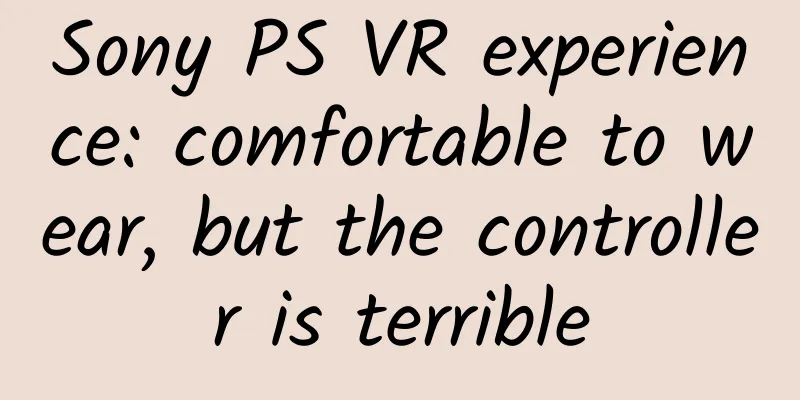MiniLED vs OLED, can TCL X11 become the "gatekeeper" of high-end TVs?

|
The field of television display is facing a technological innovation that is no less than the "defueling of automobiles". With the rapid development of mobile chips and mobile Internet, the status of television, which once played an important role in home entertainment, has begun to be shaken, so that the picture quality revolution does not seem to have received much attention from the public. Instead, many digital experts have observed a new trend in the past two years on pioneering products such as Apple Macbook Pro, iPad, and Asus notebooks - the strong arrival of Mini LED technology. Compared with the OLED technology that previously dominated the high-end market, Mini LED, after overcoming the problem of poor contrast of liquid crystal, also has the advantages of long life and high brightness, and was immediately welcomed by both the high-end market and hardcore users. For China's technology industry, technological iteration contains huge opportunities to change lanes and catch up. Just as the electrification of automobiles has made it possible for Chinese independent automobile brands to bypass the technological blockade of fuel engines, TCL, as one of the leaders and standard setters of new technologies, is expected to break the display technology ceiling and foreign technology blockade through Mini LED technology. In the OLED technology race, everything from vapor deposition equipment to pixel arrangement has already been vertically positioned by Japanese and Korean manufacturers who entered the market earlier. However, after Mini LED technology showed great potential, TCL, as the leader of new technology research and development, decisively took Mini LED as a starting point, on the one hand, exploring new boundaries of TV picture quality for users, and on the other hand, laying a solid technical foundation for the Chinese display industry to compete on the international stage. On March 9, TCL released three heavyweight new Mini LED TV products at its spring new product launch conference, including the world's largest Mini LED TV, the TCL 98X9C Pro giant screen QD-Mini LED smart screen (98 inches), the TCL C12E Lingxi QD-Mini LED smart screen (three sizes: 65, 75, and 85), and the TCL X11 Lingyao QD-Mini LED smart screen (three sizes: 65, 75, and 85), using the third-generation QD-Mini LED technology to demonstrate the "ceiling" of current TV picture quality to the industry and users. Mini LED technology is spreading like wildfire, and different manufacturers have different explorations in driving technology and partitioning strategies, but TCL's self-developed QD-Mini LED TV products have surpassed OLED TVs in multiple dimensions of picture quality. Compared with OLED technology, which has been developed for more than a decade but has made little progress, Mini LED TVs are as popular as when smartphones first emerged ten years ago. Just like every improvement in the SoC process and the increase in the main frequency of Android phones can be directly reflected in the system fluency and APP response speed, now every increase in the number of light control zones and the increase in peak brightness of Mini LED TVs can bring about a leap forward in the TV viewing experience, constantly bringing surprises to users. The stagnation of OLED panels does not mean that the technology is becoming perfect. Instead, it is due to limitations such as production technology and defects in organic light-emitting materials, which determine the upper limit of OLED TV picture quality and restrict the development of OLED technology. Compared with QD-Mini LED, Sony, Samsung, LG and other old manufacturers have already seen a generation gap in product strength. At this moment, we can already say from the perspective of strength, "The world will look at me from now on." From surface to point, 2304 zone light control creates top-quality picture experience One thing that is particularly similar to the mobile phone industry is that TV manufacturers also particularly like to use product parameters to create cognitive traps, causing users to have a wrong understanding of the picture quality of TV products. For example, mobile phone manufacturers like to highlight the number of pixels of the camera to show the photo effect in their publicity, and emphasize the number of milliamperes of the battery to imply long battery life. But in fact, without specific lens parameters such as aperture information and single pixel area, users cannot perceive the actual photo effect simply from the number of pixels; in the face of the poor SoC energy consumption ratio, large-capacity batteries cannot guarantee the battery life of mobile phones at all. The chip that has been nicknamed "Yanlong" by users in the past two years has fully proved this point. The same is true for televisions. The reason why OLED panels have been able to gain a foothold in the high-end market is mainly due to pixel-level light control and the ultra-high contrast it brings. The paper contrast ratio of one million to one implies that it can bring close to the ultimate light and dark contrast picture quality. However, this beautiful contrast data of the OLED panel cannot represent the actual viewing experience at all. The fundamental reason lies in the lifespan of OLED organic light-emitting materials. In order to avoid screen burn-in (the phenomenon that the OLED image leaves a permanent mark on the screen), manufacturers generally dare not increase the brightness of the TV. Some even designed an ABL mechanism that automatically limits the brightness specifically for OLED TVs. This results in the actual brightness of OLED TVs on the market generally being less than 500 nits, which is similar to the data of some high-end projectors and is very close to the human eye's definition of "darkness". This means that OLED TVs are not only completely unable to present the brightness levels and highlight details of Dolby Vision and HDR content, but are not even suitable for use in high ambient light scenarios such as bright living rooms. Not only that, our eyes' perception of color is composed of brightness information and saturation information, so low-brightness OLED TVs will also have serious color casts. Many industry insiders have pointed out that TV evaluation agencies' conclusions on the high color accuracy of OLED TVs are all based on small-area pixel tests, and full-screen tests will show extremely serious color shifts due to peak brightness. Some friends may ask, since OLED TVs cannot light up at all, where does their contrast data that is close to infinite come from? This is actually a math game. The contrast data is derived from the ratio of the panel's maximum brightness divided by the minimum brightness, so when black is displayed on the OLED panel, it can completely turn this off. As long as the denominator is infinitely close to zero, even if the numerator value is not outstanding, the ratio data can be close to infinity. Unfortunately, the OLED panels that can achieve pixel-level light control do not actually have the best black performance. This is mainly because OLED light-emitting pixels will have voltage instability problems at low brightness, leading to a series of problems such as pixel color cast and slow response speed. On mobile phones, manufacturers use PWM dimming to solve the low-brightness display problem by adjusting the duty cycle. However, on TV panels with DC dimming, manufacturers can only choose to completely turn off pixels in low-brightness areas. However, this also leads to problems such as OLED not being able to dim, loss of details in dark areas, and lack of layers in transitions. Correspondingly, TCL's QD-Mini LED TV panel not only achieves blackness through zone light control, but also makes the screen brighter by reducing the backlight mixing distance, achieves precise light control by reducing the LED lamp beads to only one percent of the traditional volume, and achieves high color gamut coverage and high color accuracy through the sixth-generation quantum dot technology. Taking the 85-inch TCL X11 QD-Mini LED Smart Screen as an example, this TV has increased its brightness to 2000 nits, which can present an effect close to that of the human eye observing real scenes in the sun. Up to 2304 backlight zones are controlled by 576 backlight driver chips, which can continuously adjust the brightness of the backlight zones according to the actual display screen and accurately realize point control of the light source. The sixth-generation quantum dot technology allows the TCL X11 to reach a color gamut value of 157%, color purity is increased by 58.3%, and it covers 98% of the DCI-P3 movie color gamut, truly restoring the intentions of film and television creators. When brightness and color are no longer obstacles to the life of a TV, the TCL X11 can be watched for 60,000 hours without fading, and can easily be used for more than 10 years. The excellence of TCL's QD-Mini LED TV products does not stop at paper data. In actual viewing experience, it has indeed set a new benchmark for current high-end TVs. The deep darks and brilliant brights form a sharp contrast with OLED TVs. Excellent sound and picture, bucket quality sets industry benchmark Of course, for high-end TV products, users have reason to expect more beyond picture quality. As the saying goes, "sound and picture are inseparable." In the wave of high-end television, consumers' requirements for television sound performance are also rising. Simply evolving from "listening to the sound" to stereo obviously cannot meet the needs of high-end users. Therefore, TCL, which has always attached great importance to the performance of TV audio, chose to work with Japan's Onkyo, which has more than 70 years of professional experience in home theaters, has defined global standards seven times, and is also the official equipment partner of IMAX, to jointly create a sound system. Different from the common "XX certification" that charges OEM fees, TCL X11 really installed Onkyo speakers into the TV and specially invited the Golden Ear expert team to perform professional tuning. TCL X11 is equipped with a 60W ultra-high-power 5-channel, 7-unit speaker, including two sky speaker units to simulate sounds from above. Combined with the self-developed full-domain AI sound field, it supports atmos 2.1.2 stereo surround sound. In real experience, the powerful hardware combined with psychoacoustic design enables TCL X11 to achieve a cinema-level sound experience with great immersion and surround feeling. Users can even identify the position of the sound by listening to it and clearly distinguish the direction from which the sound is coming. Although TCL still has room for improvement in its research on acoustics in the TV industry, especially when some of its competitors are already leaders in the acoustics industry. However, compared to equipping their own TV products with the ultimate speakers, other companies are obviously more willing to sell the speakers separately, splitting one product into two to increase profit margins. But on the contrary, TCL would rather cooperate with leading audio manufacturers to create a one-stop ultimate "audio-visual experience" for its products, which is even more valuable. It can even be said that among products of the same price, the Onkyo audio system of TCL X11 also reaches the ceiling level. Summarize Due to fragmented usage needs and the insensitivity to service life caused by the high frequency of phone replacement, OLED screens have indeed achieved a high market share among mobile phone equipment manufacturers. But even so, mobile phone users have never stopped discussing PWM dimming and low brightness of OLED screens. In the field of television where users have higher expectations for brightness and lifespan, OLED screens undoubtedly expose more shortcomings. When the panel parameters are demystified and the audio-visual quality returns to the actual experience scene, the audio and video performance brought by QD-Mini LED TV once again pushes the concept of "TV" to a farther boundary, and the trend of Mini LED technology replacing OLED is more obvious. As technology increasingly becomes a powerful tool for competition between countries, in the context of the new era, competition in technology has penetrated into the construction of various industries and the entire industrial chain. Therefore, our grasp of the civilian consumer technology industry must not only trace back to the upstream of technology, but also go deep into the entire industrial chain. There is no doubt that in the Mini LED technology track, TCL has proved to the world that China has the ability to dominate the development path of next-generation technology. With the multiple QD-Mini LED TV products released today, it has surpassed several peer manufacturers with product strength and set a new benchmark for audio-visual experience for the TV industry. As a winner of Toutiao's Qingyun Plan and Baijiahao's Bai+ Plan, the 2019 Baidu Digital Author of the Year, the Baijiahao's Most Popular Author in the Technology Field, the 2019 Sogou Technology and Culture Author, and the 2021 Baijiahao Quarterly Influential Creator, he has won many awards, including the 2013 Sohu Best Industry Media Person, the 2015 China New Media Entrepreneurship Competition Beijing Third Place, the 2015 Guangmang Experience Award, the 2015 China New Media Entrepreneurship Competition Finals Third Place, and the 2018 Baidu Dynamic Annual Powerful Celebrity. |
>>: The reason why iOS with 1GB RAM can beat Android with massive RAM
Recommend
Inventory of essential tools for new media operations (dry goods collection)
We also need to arrange a good-looking layout How...
NIO ES6 to be launched at the end of this year to expand product matrix
According to reliable sources, NIO's second n...
SparkToro: Survey shows that nearly 30% of users use ChatGPT to assist in programming
What tasks do people mainly use ChatGPT to solve?...
The first revision of the Science and Technology Popularization Law has been completed. These highlights are worth paying attention to.
On December 25, the 13th session of the Standing ...
5G commercialization should not wait until 2020, it is very close to us
One of the most popular focuses at MWC2017 is und...
Ideas for creating Baidu bidding SEM plan!
For the person in charge of bidding SEM, the most...
my country's annual sales of air purifiers reach 5 million units, but 30% of them are substandard
When the haze season comes every year, air purifi...
[Popular Science of Chinese Military Technology] Why is it said that the reliability of ChatGPT in military applications needs to be verified?
The full name of GPT is (Generative Pre-trained T...
How do Tencent designers optimize designs? This case study is so vivid!
Usually the designs I make are relatively simple ...
Let’s talk about the regularization of Sina Kandian, Baijiahao and Yidianhao today?
I will start from the simple and then move on to ...
Living room economy is outdated, home appliance companies are trying to grab a piece of the kitchen economy pie
After the policy dividends were withdrawn, due to...
Cancer is caused by "saving"! Doctors reveal the truth! This bad habit must be changed
Experts in this article: Hu Houxiang, Chief Physi...
〔2021 Summer〕Senior 3 Biology Target A+ Lu Weiwei
〔2021 Summer〕High School Biology Target A+ Lu Wei...
[Online Event] Learn to develop games with Cocos2d-lua in two hours
As soon as I arrived at the company in the mornin...









